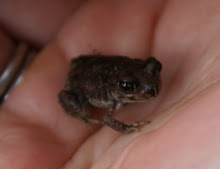
OK, this one's easy. But it's fun, and the learning involved can be adjusted to any age level. Get yourself a piece of celery, some Queen Anne's Lace, or a white Carnation. Put it in a glass of water tinted with food coloring. Wait and see what happens...
Need directions? Check out "How to Stem Dye Celery" at eHow.com. Celery is probably your best choice for really studying the plant's cells, as they are large enough to be visible to the naked eye, but the flowers show more dramatic color changes. (C'mon, you didn't really think those green Carnations for St. Patty's were naturally that color, did you?)
While waiting for your results, talk to your children about how the xylem and phloem work in plants, or Google it to refresh the process for yourself. Doing an adult project? Don't worry, plant cells can be complicated enough to keep anyone interested. Have fun!
Monday, May 5, 2008
Nature & Science II
Labels:
dye celery,
nature,
science project
Subscribe to:
Post Comments (Atom)



No comments:
Post a Comment